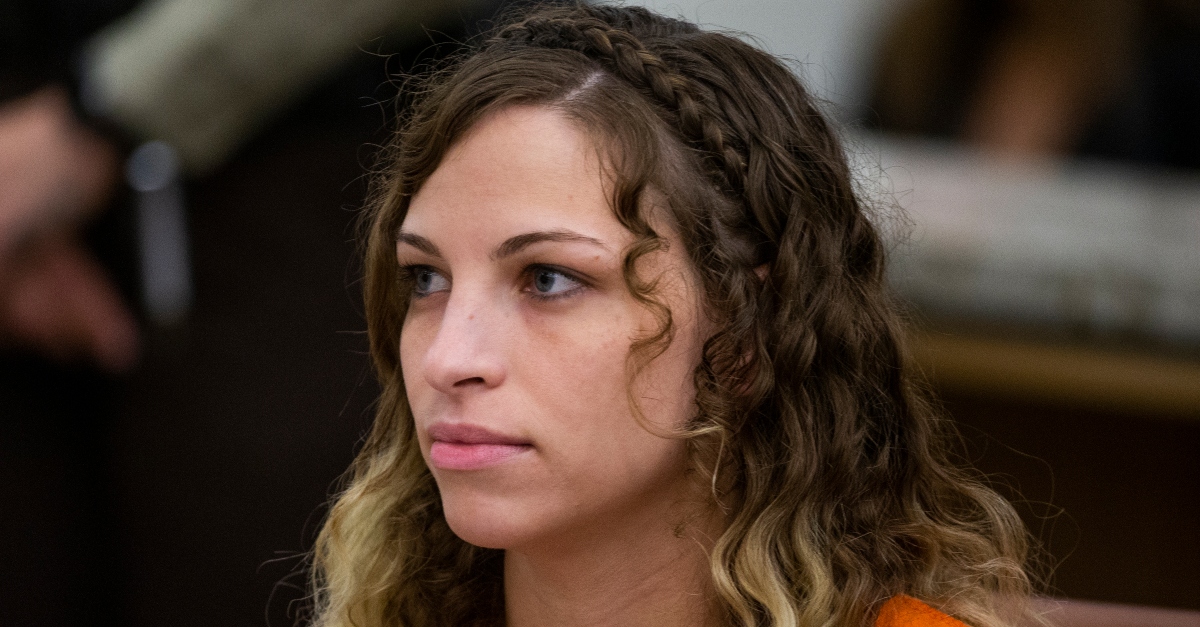Brittany Zamora has become a name that evokes strong reactions across the United States. Once a middle school teacher, she gained notoriety for her involvement in a scandal that shocked the community and drew national attention. This article delves into the life and controversies surrounding Brittany Zamora, exploring her background, the events that led to her current status, and the implications of her actions.
The story of Brittany Zamora serves as a cautionary tale about the complexities of human behavior and the consequences that can arise from poor choices. Her case highlights the ongoing discussions about teacher-student relationships, consent, and the legal ramifications of such actions. As we navigate through the details of her life, we will explore the societal reactions to her case and what it means for the education system as a whole.
In the following sections, we will examine Brittany Zamora's biography, her personal life, and the events that led to her downfall. We will also address the questions that arise from her story, seeking to understand the motivations behind her actions and the broader implications for society.
What is Brittany Zamora's Biography?
Brittany Zamora was born on July 12, 1988, in the United States. She pursued a career in education, earning her degree and eventually becoming a middle school teacher. Known for her engaging teaching style, Zamora was well-liked by her students and colleagues. However, her life took a dramatic turn when her actions led to a scandal that would change her life forever.
| Personal Details | Bio Data |
|---|---|
| Name | Brittany Zamora |
| Birth Date | July 12, 1988 |
| Occupation | Middle School Teacher |
| Location | United States |
| Notoriety | Involved in a teacher-student scandal |
What Led to Brittany Zamora's Downfall?
The events that led to Brittany Zamora's downfall began in early 2018 when allegations surfaced regarding her inappropriate relationship with a 13-year-old student. The relationship, which included sexual encounters, was uncovered after the boy confided in a friend, leading to an investigation by school officials and law enforcement.
As the investigation unfolded, it became clear that Zamora had engaged in a series of inappropriate interactions with the student, both on and off school grounds. This shocking revelation sent ripples through the community, prompting discussions about the responsibilities of educators and the protection of students.
How Did the Community React to Brittany Zamora's Actions?
The community's reaction to Brittany Zamora's actions was swift and severe. Parents, students, and educators expressed outrage and disbelief that someone in a position of authority could betray the trust placed in them. Many called for stricter regulations and oversight for teachers to prevent similar incidents from occurring in the future.
Local news outlets covered the story extensively, sparking debates about the nature of consent and the legal ramifications of teacher-student relationships. The case also raised questions about the current educational system and whether enough is being done to safeguard students from predatory behavior.
What Were the Legal Consequences for Brittany Zamora?
Brittany Zamora faced serious legal consequences for her actions. In September 2019, she pleaded guilty to multiple counts of sexual conduct with a minor. The court sentenced her to 20 years in prison, a decision that was met with both applause and criticism from various segments of the community.
Some believed that the sentence was appropriate given the severity of her actions, while others argued that it was too harsh, pointing out that Zamora's behavior highlighted systemic issues within the education system. Regardless of the differing opinions, her case underscored the serious consequences that can arise from inappropriate relationships between teachers and students.
What Impact Did Brittany Zamora's Case Have on Education Policies?
The fallout from Brittany Zamora's scandal prompted a reevaluation of education policies across the United States. Many school districts began to implement stricter guidelines regarding teacher-student interactions, focusing on transparency and accountability. This included enhanced training for educators on appropriate boundaries and the legal implications of crossing those lines.
Furthermore, discussions surrounding the mental health and well-being of students gained traction, with calls for better support systems to help students navigate difficult situations. Advocates for educational reform emphasized the importance of creating safe environments for students, free from the threat of exploitation.
What Lessons Can Be Learned from Brittany Zamora's Story?
Brittany Zamora's story serves as a stark reminder of the complexities surrounding teacher-student relationships. It highlights the importance of maintaining professional boundaries and the need for educators to be held accountable for their actions. Additionally, it raises awareness about the vulnerabilities of students and the necessity of safeguarding their rights and well-being.
As society continues to grapple with these issues, it is crucial to foster open dialogues about consent, power dynamics, and the responsibilities of those in authority. By learning from the mistakes of individuals like Brittany Zamora, we can work towards creating a safer and more supportive educational environment for all students.
What Does the Future Hold for Brittany Zamora?
As of now, Brittany Zamora is serving her sentence, and it remains uncertain what her future holds. The implications of her actions will undoubtedly linger, affecting not only her life but also the lives of those involved. The community will continue to grapple with the consequences of her choices, and the education system will likely remain vigilant in its efforts to prevent similar cases from arising.
In conclusion, the story of Brittany Zamora is one that evokes a range of emotions and serves as a powerful reminder of the responsibilities that come with being an educator. As we reflect on her life and the events that transpired, we must consider the lessons learned and the ongoing efforts to protect students in educational settings.



